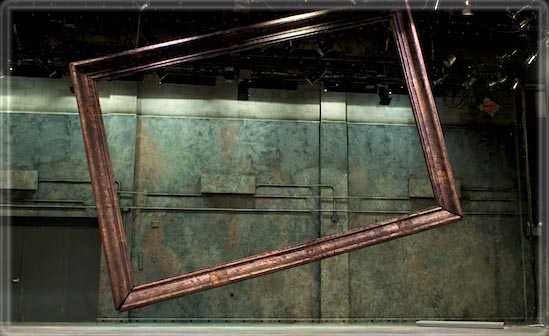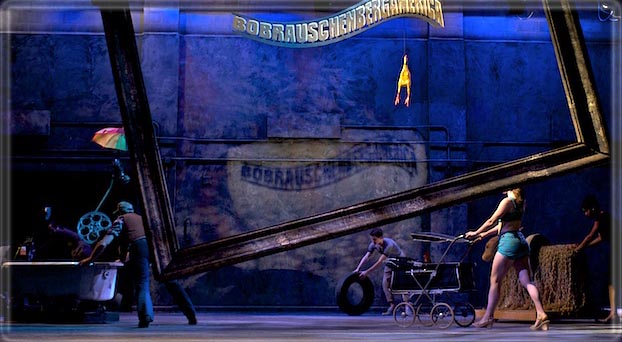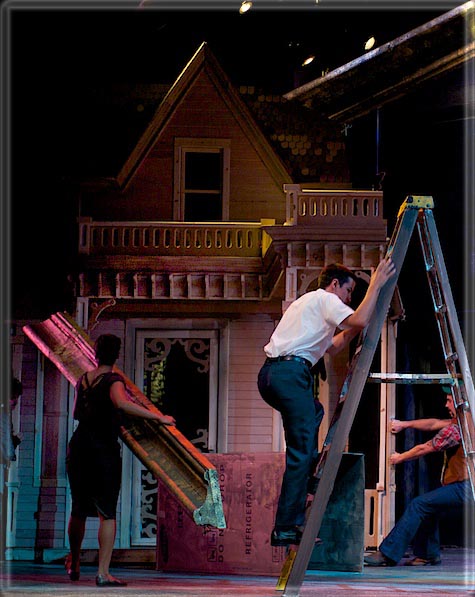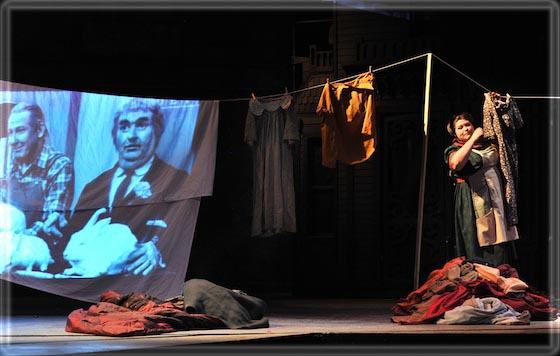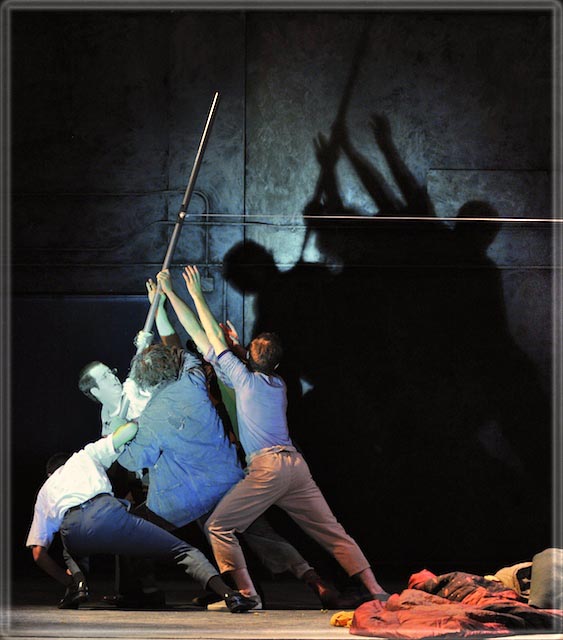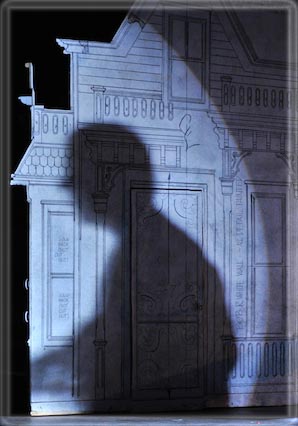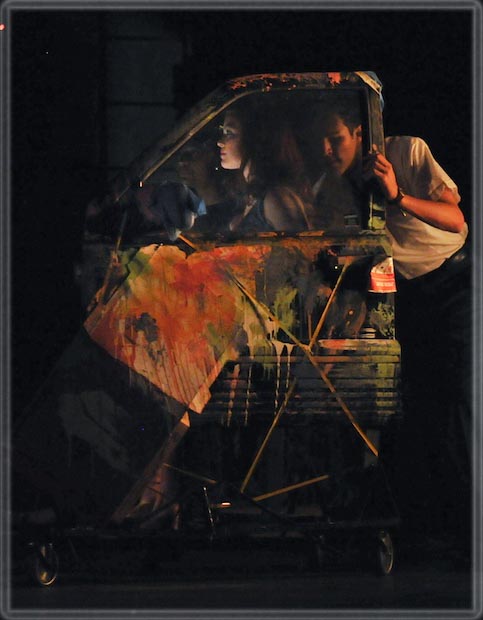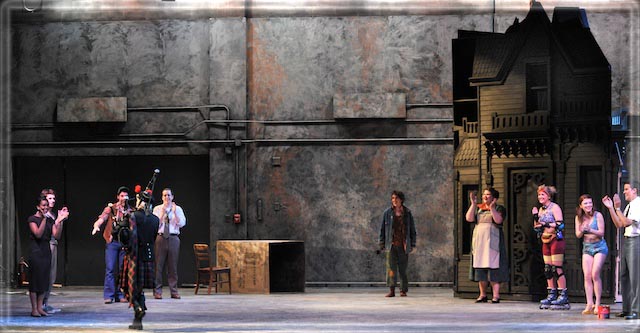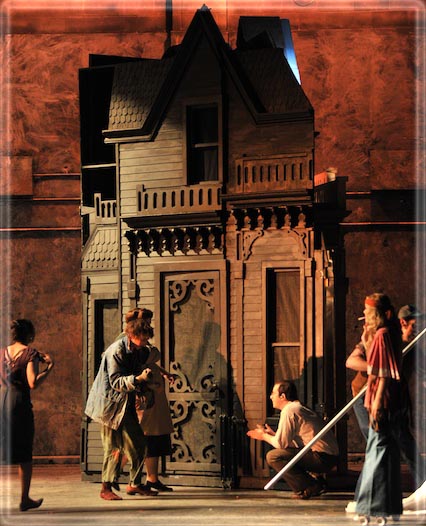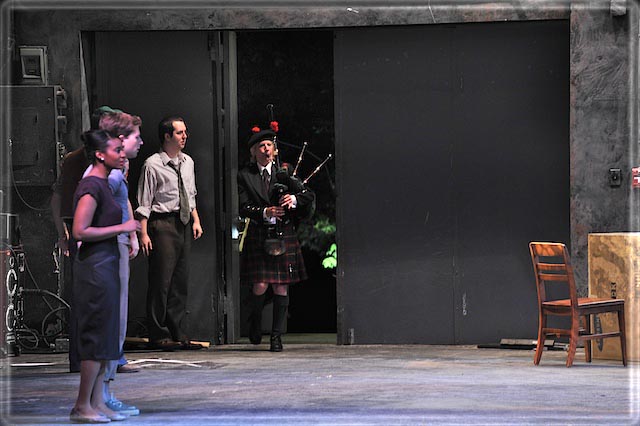|
Designer Statement: This production was a challenge BUT quite a fulfilling one. Of course the play as a whole pays homage to Bob R. himself and indeed the script stipulates a number of specific choices reflective of his life and work. But thematically the work also lives within the ethos of the traditions and stylistic choices from which the artist sprung. This was a golden period of exploration and pushing of the boundaries while questioning the nature of art itself. So many pioneers came forth in this era as did many manifestations of performance art as well as immersive and participatory art. Some of these in themselves were inspired by the explorations of even earlier pioneers such as Brecht. It was exciting to embrace this ethos but not just as token manifestations but as a true means of exploring the text in a meaningful way.
In this production, the space itself is our canvas, and we start with our canvas, a blank one. We start with nothing and in fact there is no masking of any kind used in the play. I like such a format, especially when dealing with student performers in training as it forces them to live in the moment with their characters from the moment they enter the space.
The first thing the performers do in our iteration is to "assemble the frame of reference". It is fun the number of meanings this can have including the reference to the theatre's proscenium arch itself. The stage space itself is left blank but the back wall as it was, was a very uninteresting and not too useful black plaster. Along with the floor the surface was repainted with an old distressed plaster treatment as though the stage could be an art studio. As this was to be the last production ever in the space, which was soon after gutted and turned into an actual art studio, we could do such re-treatments without even worrying about restoration of the space!
We wanted to have the entire marching band make an appearance in the play but had to settle for a lone bagpiper. She started her entrance from outside the entire building. The backstage loading door, in full audience view, was flung open and she entered, marched across the stage, and exited through the audience. It was a great moment of art! Both Brecht and Bob R. would have loved it.
Embracing the movements of the day, we did a fair share of re-purposing and often used elements in unexpected ways. At one point, for instance, as depicted above, laundry on a line becomes a screen for the "slide show". As the men raise the laundry line pole a light casts a shadow on the back wall accentuating an unexpected homage to the raising of the flag at Io Gima.
One fun bit of transmogrification comes from a rather inventive use of periactoi technology. I use the firm to create a house facade, but in an interesting 4 phase way. While all sides depict the same facade of a quaint Midwest Victorian clapboard house, each side treats the house in a different way. One side presents a blueprint elevation of the house at full scale. This doubles as a shadow projection surface. Side two presents the house in a flattened dimensional way, de-emphasizing the materials by painting the sculptural forms in pure black as Louse Nevelson often would do with her work. The third rotation side, presented the house in full dimensions. On each side, the matching doors were practical and could be entered.
There was then a surprise 4th side as the periactoi could open up then like a book to reveal an interior treatment but reflecting the facade again, only this time rendered as an assemblage sculpture made from common found objects. It provided for a very interesting surprise to the audience, especially when the whole thing came to life with internal strings of light as a finale. |

